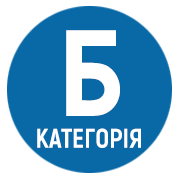LETTERS FROM THE FRONT AND TO THE FRONT AS A SOURCE FROM THE HISTORY OF WORLD WAR I IN HALYCHYNA
DOI:
https://doi.org/10.33402/up.2020-13-205-223Keywords:
letters from the front and rear, letters as a historical source, private relations, World War I, HalychynaAbstract
This article is an attempt to analyze the correspondence of Halychyna Ukrainians from the front and to the front; identify the possibilities and limitations of the epistolary as a historical source; capture key themes of World War I letters. In essence, the war caused a «letter boom» between home and the front. Each had its own history of writing, shipping/ delivery, and ultimately reading. It turned out that the correspondence was almost the only way to find out any information about loved ones and reflected the everyday, ideological, cultural, political ideas of the time. On the other hand, during the war, the ability to write became a kind of privilege for literate people, which made it possible to earn money by organizing special offices for writing letters to the illiterate. The article also deals with the functioning of the mail, censorship; topics of religiosity, life and death, perception of the enemy, reactions to the Russian occupation in Halychyna, a description of the place of residence are covered. Correspondence between men who were at the front and their relatives (mainly wives) who remained in the rear was analyzed. Not all related letter complexes have remained complete – one-way correspondence predominates. All these texts differ in the level of education; their content depended on social status, nationality, religion, worldview.Despite the excellent information about the couple, the letters had a similar emotional color associated with feelings for relatives. The texts were directed to the future with the hope that the war would end as soon as possible. It was found that the war led to the transformation of traditional family relationships, allowed a woman to feel in the roles that traditionally belonged to men. The letters show that there were no universal rules of conduct. Whether or not the family had its «limit» of acceptable topics for conversation, influences each other.
References
Baidak, M. (2014–2015). Prostory zhinochoho povsiakdennia v roky Pershoi svitovoi viiny (na prykladi Halychyny y u svitli osobovykh dzherel). Istorychni ta kultur- olohichni studii, 6–7, 118–133 [in Ukrainian].
Baidak, M. (2015). «Zhyvyi zhyve dumaie»: zhinoche rozuminnia Chasu v roky Velykoi viiny 1914–1918 rr. In Materialy Vseukrainskoi naukovoi konferentsii «Viiny i zbroini konflikty u Skhidnii Yevropi v XX – na pochatku stolit» (pp. 19–26). Zhytomyr [in Ukrainian].
Bezhuk, O. (2016). Persha svitova viina v systemi binarnykh opozytsii zhinochoho ta cholovichoho dosvidi. Narodoznavchi zoshyty, 1294–1302 [in Ukrainian].
Bezplatne pysanie lystiv. (1917, Traven 26). Dilo, 121 [in Ukrainian].
Blazhkevych, I. (1991). Spohady (30.07.1914 – 4.10.1921). Dzvin, 5 [in Ukrainian].
Blazhkevych, I. (1991). Spohady. Dzvin, 6 [in Ukrainian].
Bostridge, M., & Bishop, A. (Eds.). (1998). Letters from a Lost Generation: First World War Letters of Vera Brittain and Four Friens. Virago [in English].
Burlaka, H. (Comp). (2006). Lystuvannia M. Hrushevskoho. Kyiv [in Ukrainian].
Chykalenko, Ye., & Stebnytskyi, P. (2008). Lystuvannia. 1901–1922 roky (N. Myronets, I. Starovoitenko, O. Stepchenko, Comps.). Kyiv [in Ukrainian].
Głębicka, E. (Comp.). (2005). Ich noce i dnie. Korespondencja Marii i Mariana Dąbrowskich 1909–1925. Warsaw [in Polish].
Hyrych, I. B. (2000). Vydannia ukrainomovnykh epistoliarnykh dzherel kintsia ХІХ – seredyny ХХ st.: metodychni rekomendatsii. Kyiv [in Ukrainian].
Hyrych, I. B., & Liakhotskyi, V. P. (1995). Arkheohrafichne opratsiuvannia epistoliarnoi spadshchyny ukrainskykh i politychnykh diiachiv kintsia XIX – pershoi tretyny ХХ st. Arkhivy Ukrainy, 4–6, 84–87 [in Ukrainian].
Khalak, N. (Comp). (2012). Lystuvannia Steapana Tomashivskoho z Ivanom Kryp- iakevychem: (liutyi 1906–cherven 1930). Lviv: Lvivske viddilennia IUAD NAN Ukrainy [in Ukrainian].
Kharakterestychne. (1917, Hruden 13). Dilo, 293 [in Ukrainian].
Kotsiubynska, M. (2001). Zafiksovane i netlinne. Rozdumy pro epistoliarnu tvorchist. Kyiv [in Ukrainian].
Kuzmenko, V. (1998). Pysmennytskyi epistoliarii v ukrainskomu literaturnomu protsesi 20–50-kh rr. ХХ st. Kyiv [in Ukrainian].
L. L. V chotyrykutnyku smerty. (1930). Litopys Chervonoi kalyny. Iliustrovanyi zhurnal istorii ta pobutu, 2 (2) [in Ukrainian].
Letters from the First World War, 1915. How did these men experience the conflict? Retrieved from http://www.nationalarchives.gov.uk/education/resources/letters-first- world-war-1915/ [in English].
Letters To Loved Ones by Amanda Mason and Elen Parton. Retrieved from http://www.iwm.org.uk/history/letters-to-loved-ones [in English].
Lvivska lystova tsenzura znesena. (1917, Lystopad 16). Dilo, 270 [in Ukrainian].
Lyst Emili Chittiks do narechenoho Viliama Martina, Brentvud, 28.ІІІ.1917. Retrieved from http://www.iwm.org.uk/history/letters-to-loved-ones [in English].
Lyst nevidomoho avtora. Retrieved from http://www.nationalarchives.gov.uk/edu- cation/resources/letters-first-world-war-1915/trenches-canaries-cages/ [in Ukrainian].
Lysty rosiiskykh zhovniriv. (1915, Hruden 20). Ukrainske slovo, 161 [in Ukrainian].
Lysty z viiny. (1915, Liutyi 2). Svoboda, 13 [in Ukrainian].
Lysty z viiny. (1915, Liutyi 4). Svoboda, 14 [in Ukrainian].
Lysty z viiny. (1915, Liutyi 6). Svoboda, 16 [in Ukrainian].
Lysty z viiny. (1915, Liutyi 9). Svoboda, 11 [in Ukrainian].
Lysty z viiny. (1915, Sichen 2). Svoboda, 1 [in Ukrainian].
Lysty z viiny. (1915, Sichen 21). Svoboda, 8 [in Ukrainian].
Lysty z viiny. (1915, Sichen 23). Svoboda, 9 [in Ukrainian].
Lysty z viiny. (1915, Sichen 26). Svoboda, 10 [in Ukrainian].
Lysty z viiny. (1915, Sichen 7). Svoboda, 3 [in Ukrainian].
Lysty, opublikovani na saiti Mylytera. Voiennaia literatura. Retrieved from http://militera.lib.ru/db/stepun/01.html [in Russian].
Novynky. V spravi lystiv. (1916, Zhovten 21). Dilo, 257 [in Ukrainian].
Polevi lysty vilni vid tsenzury. (1915, Hruden 15). Ukrainske slovo, 168 [in Ukrainian].
Poliova poshta u Skhidnii Halychyni. (1930). Litopys Chervonoi Kalyny. Iliustro- vanyi zhurnal istorii ta pobutu, 2 (9), 5 [in Ukrainian].
Pomich polonenym. (1916, Lypen 22). Dilo, 179 [in Ukrainian].
Poshta na Zakhidnii Ukraini. Deshcho pro avstriisku polevu poshtu. (2002). Drohobytskyi kolektsioner, 1, 10 [in Ukrainian].
Prokip, V. (Comp.). (2016). Lesia Ukrainka. Lysty: 1876–1897. Kyiv: Komora [in Ukrainian].
Pułlownik Adolf Małyszko Listy z okopów. (1925). (3rd ed.). Warsaw [in Polish].
Romaniuk, T. (2013). Lysty istoryka Yaroslava Pasternaka z frontiv Pershoi svitovoi viiny. Viiskovo-naukovyi visnyk, 20, 109–125 [in Ukrainian].
Schulte, R., & Tippelskirh, X. (Eds.). (2004). Reading, Interpreting and Historiciz- ing: Letters as Historical Sourses. San Domenici [in English].
Shchastie ne v shchastiu abo i protyvno. (1916, Zhovten 23). Ukrainske slovo, 103 [in Ukrainian].
Source Types: Value and Limitations. Retrieved from http://school.radiophile.org/wp-content/uploads/2016/09/source_types_value_and_limitation.pdf/ [in English].
Stepun, F. Iz pysem praporshchyka-artyllerysta. Retrieved from http://militera.lib.ru/db/stepun/index.html [in Ukrainian].
Svarnyk, H. (Ed.)., & Dziuban, R. (Comp.). (2004). Lysty Mykhaila Hrushevskoho do Mykhaila Mochulskoho (1901–1933). Lviv [in Ukrainian].
Sviatovets, V. (1981). Epistoliarna spadshchyna Lesi Ukrainky: Lysty v konteksti khudozhnoi tvorchosti. Kyiv [in Ukrainian].
Uryvky z liubovnykh lystiv. (1930). Istorychnyi kalendar-almanakh Chervonoi Kalyny na 1930 rik, 78–80 [in Ukrainian].
Voitsekhivska, I. (1998). Epistololohiia. Korotkyi istorychnyi narys. Kyiv [in Ukrainian].
Ziółkowska-Boehm, A. (Comp.). (2014). King i Królik. Korespondencja Zofii i Melchiora Wańkowiczów 1914–1939 (Vol. 1). Warsaw [in Polish].






